Perhaps it’s because of the abundant rainfall we received in July (not so much in August, but there’s still hope for the last few days), but the tree frogs have lately been more regular guests here at Casa Fire Ant.
They haven’t necessarily been considerate guests. Alert Gazette readers will recall this report in which I document one that’s suctioned onto a living room window scarfing down various insects attracted to the lights at night. It was pretty entertaining to observe its dining habits, but snails apparently have nothing on tree frogs when it comes to leaving slime trails on glass.
I found this one on a different window early one morning about a week ago (you can see my ghostly visage in the reflection in the top photo), and most of the smears on the glass are courtesy of the frog. (I don’t care to contemplate their exact anatomical origins.)

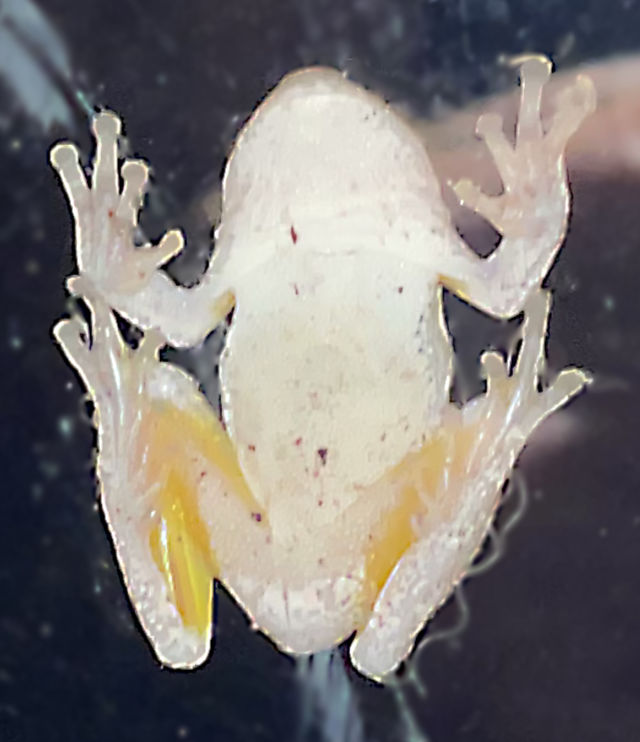
It’s at this point where I normally would delve into various characteristics of the particular species, but I’ve plowed that field before and the harvest was quite meager. Suffice it to say (once more), that the only way to distinguish between a gray tree frog (Dryophytes versicolor) or a Cope’s gray tree frog (Dryophytes chrysoscelis) is by DNA analysis or by listening to their calls, and good luck finding the latter on Spotify.
Just kidding…you don’t actually have to look for them on Spotify (or Pandora for that matter), because YouTube has your back.
Many thanks to Ask A Naturalist for the links to those videos along with more information about the species in question.
While perhaps interesting, those videos didn’t help me because our frogs are silent around us. In fact, I get the distinct impression that they’d be just as happy if we’d vanish from their domain. You see, they seem to have established living arrangements in a sort of duplex in one of the pots on our back porch containing anthuriums. Here’s what I mean…

It may not be obvious at first glance, but we have our First Floor Frog and our Penthouse Frog.
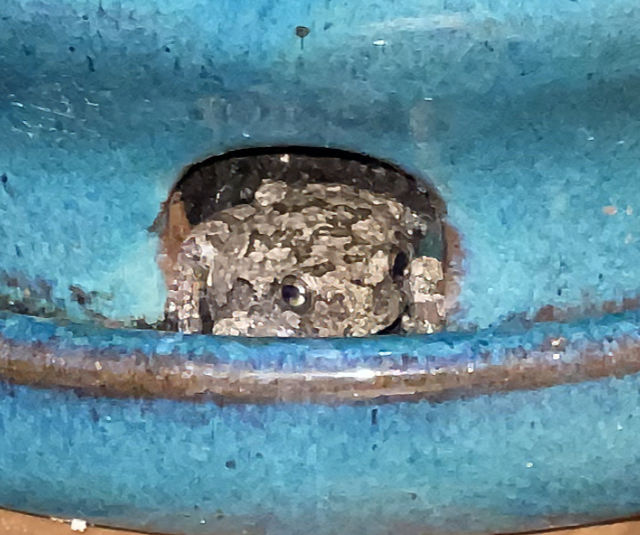
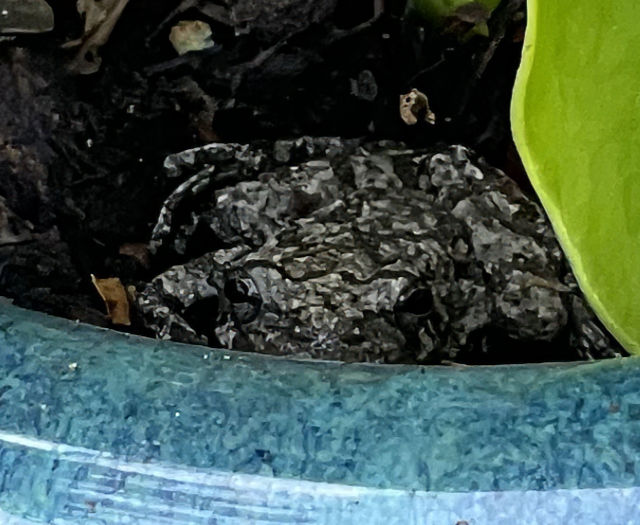
Please note that I’ve given them unisex names because I don’t jump to conclusions about such things.

Let’s shift gears and discuss another recent visitor to our neighborhood…one that’s decidely more destructive and therefore less welcome.
Our neighbor who lives a block away and whose home, like ours, backs up to the creek, sent the following two photos taken in his backyard.
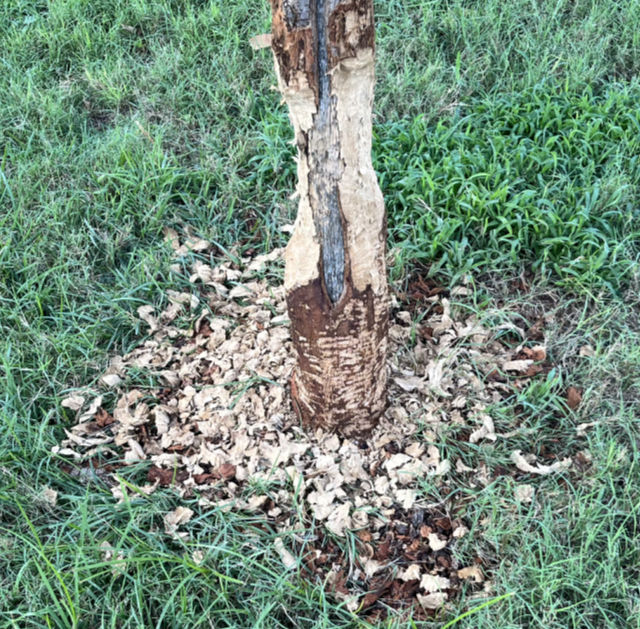
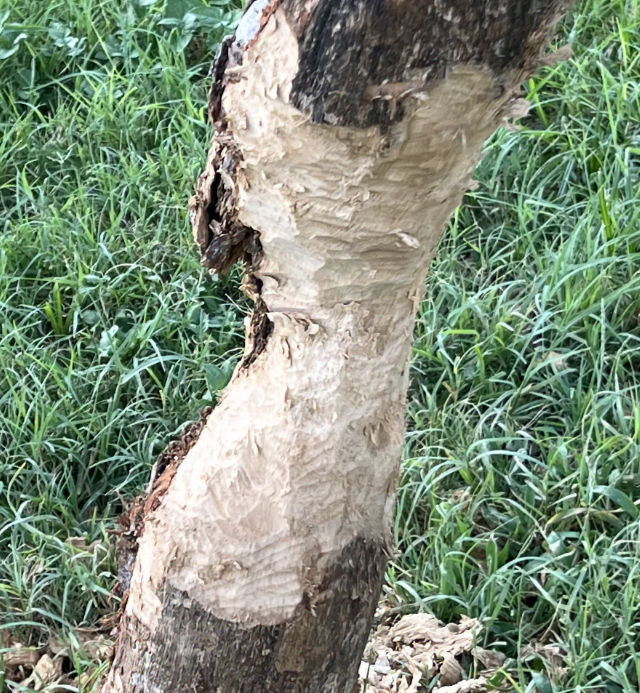
I don’t recognize the species of tree, but what I do recognize is the damage caused by — wait for it — a beaver. That’s right…there are beavers in Horseshoe Bay, Texas.
Alert Gazette readers know that this isn’t the first time I’ve reported evidence of a beaver population in Pecan Creek, starting in 2018 and with video confirmation two years later. But this is the first verifiable proof that they can cause damage in our neighborhood.
Now, some might contend that this damage was caused by a nutria, and there is indeed a nutria population around Lake LBJ. But nutria don’t leave teeth marks like those shown in the photos, and they tend to girdle small trees rather than destroying them. Also…see the two above-linked posts…
As a result of this damage, several other neighbors along the creek have put protective barriers around the bases of their smaller trees. I’m pessimistic that the two damaged trees will survive, and that’s a shame. Still, I kinda like knowing that our wildlife diversity is still healthy despite the ever-encroaching development. After all, it’s their world…we’re just living in it.
Closing thought for the day…

Discover more from The Fire Ant Gazette
Subscribe to get the latest posts sent to your email.

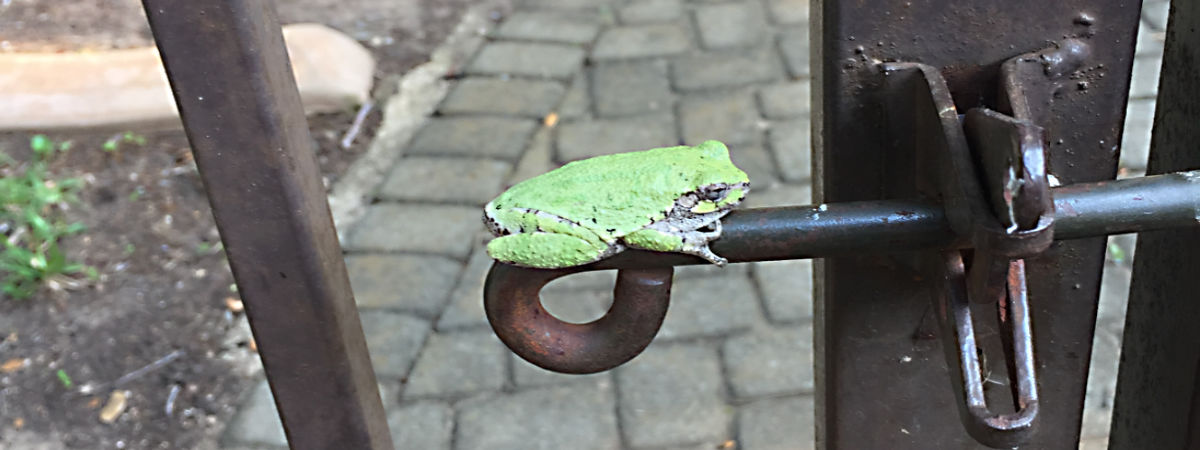
Wow. Beavers in Horseshoe Bay. Never would have thought that!! I’m with you-don’t think that tree will survive😳
Jen, it gets even stranger. According to wildlife scientists, even Midland is within the range of beavers: https://www.researchgate.net/figure/Geographic-range-of-the-beaver-Castor-canadensis-Khul-in-North-America-Patterson-et_fig1_320474637
Of course, some years ago they found alligators in a draw outside of Odessa. 😄